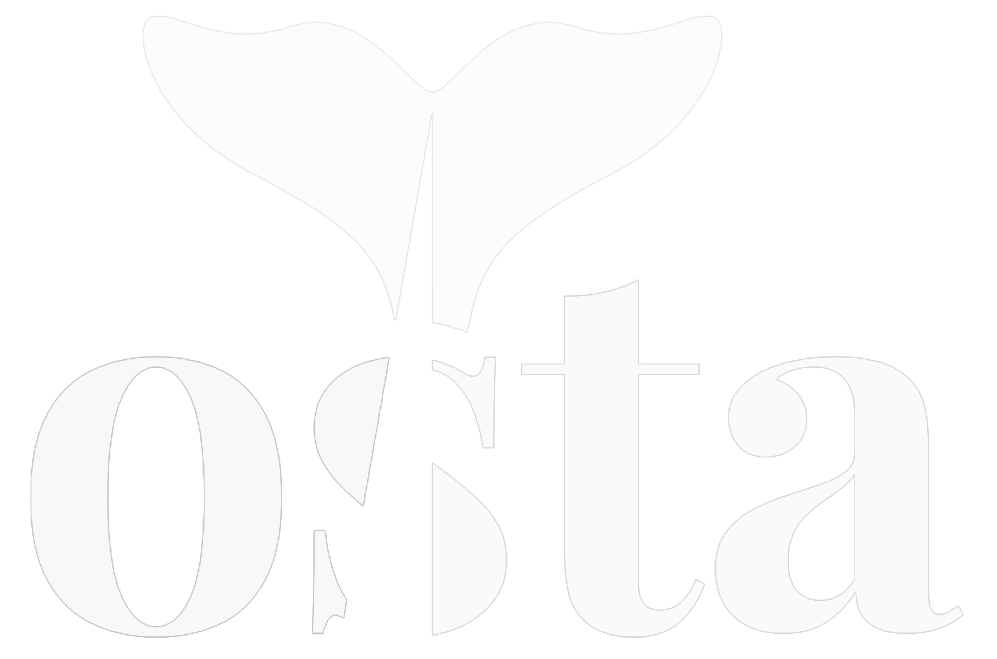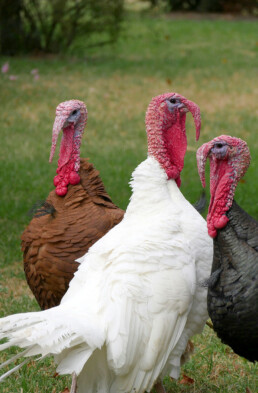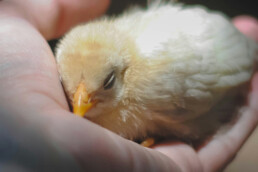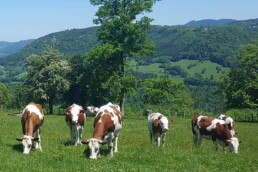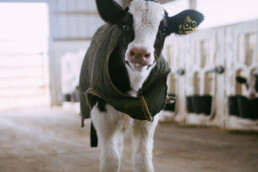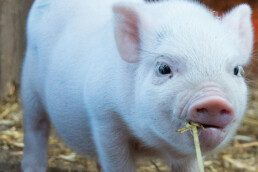Navigating Animal Hardships
New 2023 Flemish Legislation Confirms Industry Standards on Turkey Welfare: Reforms Needed
The welfare of meat turkeys in Flanders is in dire need of improvement, as current legislation and industry standards fall short of addressing key welfare concerns. The issues include poor living conditions, vagueness in welfare regulations, and an ineffective slaughterhouse inspection system.
A critical assessment of the 2023 decree reveals it merely reaffirms existing industry standards and overlooks crucial aspects such as stocking density, outdoor access, and breeding regulations. To transform turkey welfare in Flanders, the legislation should enforce lower maximum densities, guarantee outdoor access, ban fast-growing breeds, and add specific rules on enrichment, water access, beak trimming, daylight, ventilation, and maximum occupancy.
The Suffering of Meat Turkeys in Flanders
Since 2019, GAIA, a Belgian animal welfare organization, has been documenting the living conditions of meat turkeys in Flanders, noting several welfare issues:
- Leg and mobility problems, partially due to the rapid growth rate of the ‘Hybrid Converter’ breed, which hinders normal walking.
- Poor barn hygiene, leading to turkeys living in their and others’ feces. The issue is further complicated by the lengthy slaughter cycle for turkeys, which lasts between 14 and 18 weeks. This duration is considerably longer than the slaughter cycles of other poultry species.
- Overcrowded barns, restricting free movement of turkeys.
- High mortality rate: up to 12% of turkeys die before slaughter age.
- Damaging pecking behavior.
- Turkeys weakened by intensive breeding, lacking muscle tension, and becoming crippled or immobile.
- Respiratory problems due to constant contact with feces. [1]
Turkey Legislation – Just Industry Standards
Business as Usual
In 2023, legislation for turkeys, the Flemish Decree of December 22, 2023 ‘Establishing Minimum Requirements for the Protection of Turkeys’, was adopted, effective from 2026. But it merely reaffirms existing industry standards on three essential points: stocking density, outdoor access, and breeding regulations, and falls short on other aspects.
Vague Regulations
Some provisions intended to enhance welfare remain vague, such as bedding, enrichment materials, and water supply).
Bedding: The 2023 decree states that turkeys must have permanent access to dry and loose bedding, without specifying how.[2] To address this, obligations should include:
- Ensuring bedding depth of 6 to 10 cm, depending on the season.
- Daily replenishing of bedding to maintain dryness and looseness.
- Establishing maximum bedding moisture content.
Enrichment Material: The decree mandates 15 kg bales of straw for every 400 turkeys. If outdoor access is not available, the decree stipulates that ‘other types of enrichment material must be used’. However, it neglects to define the specific materials required, which is negligent.’[3].
Additionally, the decree mandates sufficient elevated perches and platforms in the barn, but lacks precision, particularly regarding the provision for turkeys older than four weeks and platforms for both younger and older turkeys. [4]
The statement ‘straw can serve as a platform’ is vague about the amount of straw needed and the replacement frequency. [5] Using straw bales as platforms is not ideal. They require frequent replacement because turkeys destroy them by pecking, leaving no sitting space. Furthermore, straw bales serve a different purpose than platforms and perches.
Inspection System in Slaughterhouses [7]
The proposed inspection system, based on a check for footpad lesions at the slaughterhouse, is not foolproof. In 2 consecutive batches, 40 out of 100 turkeys must have a severe footpad lesion before a score of 80 is reached, triggering a 10% reduction in barn stocking density.[8] It remains uncertain that these surveys will be conducted and their results respected.
Before this decree, there were no regulation regarding turkeys. Nonetheless, the 2023 decree is unlikely to improve the welfare of turkeys.
Enhancing Turkey Welfare: Critical Improvements Needed in Legislation
Three key aspects need attention to improve turkey welfare. They are not adequately addressed in the 2023 decree:
- Stocking Density: Current rules in Flanders about stocking density follow industry standards (52 kg per m2 for hens and 56 kg per m2 for toms) but neglect turkey welfare.[9] Walloon regulations, with lower maximum stocking densities, do better. The 2023 should follow Walloon’s example, by setting lower maximum densities, like 30 kg per m2 for hens and 36 kg per m2 for toms.
- Outdoor Access: Turkeys need guaranteed access to outdoor areas for their wellbeing.[10] The 2023 decree only suggests outdoor access, not imposing it, which is not enough for the turkeys. Our minimum standard requires access to a wintergarden, with at least 30% indoor space, unless there’s outdoor access of at least 10 m2 per animal.
- Breeding Regulations: Fast-growing breeds should be banned to prevent welfare issues. The 2023 decree’s maximum growth rates still allow these breeds. [11] Only slower-growing turkey breeds should be allowed, with a maximum growth rate of 110 or 120 g per day.
Other ways to improve turkey welfare include:
- Enrichment: Provide more enrichment materials, with at least one hanging and one lying item per 200 turkeys, replaced regularly. Aso, offer enough perches and platforms for all turkeys in the barn at once.
- Slaughterhouse Inspection System: Instead of waiting for a score of 80, which requires 40 out of 100 turkeys in two consecutive batches to have severe footpad lesions, the Walloon Animal Welfare Council suggests taking action much earlier, at a score of 10. This approach would necessitate a more proactive stance towards animal welfare, triggering interventions such as a reduction in barn stocking density sooner rather than later.
- Beak trimming: Ban beak trimming or make it unnecessary through research.
- Daylight and Ventilation: Improve daylight openings and ventilation, providing enough natural light and reducing maximum concentrations of ammonia and carbon dioxide.
- Water and Food Supply: Make specific rules for water access, including at least 30 cm of feeding trough per turkey and one drinking nipple or trough per 12.5 turkeys.
- Grit/Gizzard Gravel: Give grit/gizzard gravel based on turkey age, following the Walloon Animal Welfare Council’s advice on type and amount.
- Maximum Occupancy: Set a maximum number of animals per compartment, with a limit of 2,500 animals to avoid overcrowding and improve welfare.
Impact if the Optimal Reality is Realized:
255,150 Animals
255,150 Turkeys
__
In Flanders, the year 2018 saw the slaughter of 765,452 turkeys. [12] Given that a typical ‘slaughtering cycle’ for a meat turkey spans 14 to 18 weeks , this suggests that at any given moment, roughly one third of this total, or about 255,150 turkeys, are alive in Flanders.
[1] GAIA Report, ‘Forgotten by the Legislator – the Suffering of Intensive Meat Turkeys in Flanders’, December 2019 (original text in Dutch).
[2] Decree of the Flemish Government Establishing the Minimum Requirements for the Protection of Turkeys, Article 10 (22 December 2023).
[3] Ibid. Article 12.
[4] The current mandate calls for an ‘adequate number’ of platforms for turkeys older than four weeks. It specifies a minimum size but does not provide a clear calculation based on the number of turkeys in the barn, leading to confusion. While specific rules apply to the perch length for younger turkeys, no such rules exist for older ones. This inconsistency calls for clarification. Ibid. Article 12.
[5] The same decree, Article 12, Paragraph 3.
[6] The same decree, Article 11 ,§1, second clause.
[7] The same decree, Article 15.
[8] Articles 15 and 7,§2 of the same decree.
[9] Article 7,§1 of the same decree.
[10] Ibid. Article 11§2.
[11] Ibid. Article 8.

